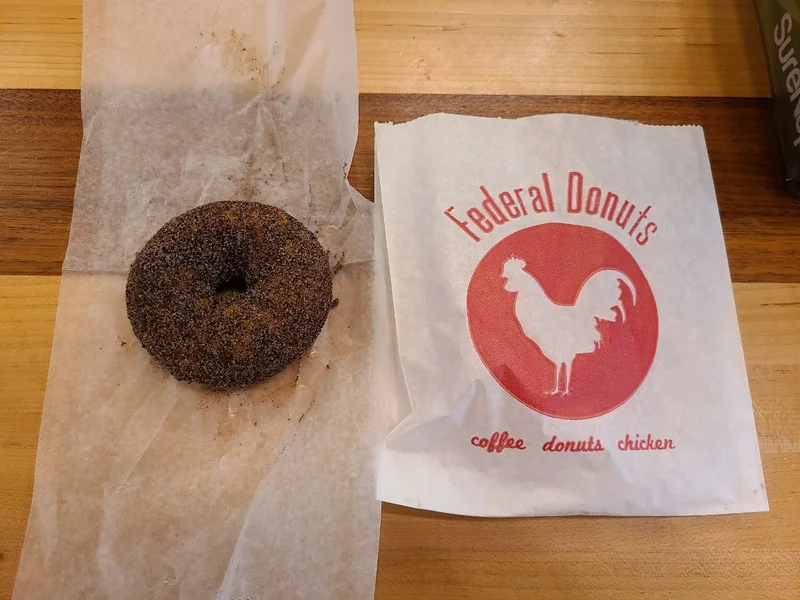XLM Insight | Stellar Lumens News, Price Trends & Guides
XLM Insight | Stellar Lumens News, Price Trends & Guides
When a 64-year-old company files for Chapter 11 bankruptcy, the default narrative is one of nostalgic tragedy. We’re meant to picture a beloved local institution, a victim of a tough economy, fighting to preserve a legacy. Jack’s Donuts, an Indiana-based chain founded in 1961, is certainly leaning into that script. Their Facebook page reassures customers that “Jack’s Donuts has been about more than donuts. It’s been about people.” A comforting, if predictable, sentiment.
But the bankruptcy filing itself tells a far less sentimental story. The corporate reassurances are like a fresh coat of paint on a house with a foundation that’s actively crumbling. When you strip away the folksy branding and look at the raw numbers, this isn’t a story of a tough break. It’s a clinical case study of a business that appears to have been hollowed out from the inside by staggering liabilities, questionable leadership, and a strategic pivot that may have fatally alienated its own operators. The bankruptcy isn't the storm; it's the long-overdue flood that follows.
Let’s start with the cold, hard math. The franchisor and its commissary filed for bankruptcy listing between $1 million and $10 million in assets. On the other side of the ledger, they listed liabilities between $10 million and $50 million. This isn't a tight spot; it's a financial black hole. Even in the most optimistic interpretation of those ranges, the company owes at least as much as its total assets, and more likely, it owes five times more. This kind of discrepancy doesn’t happen overnight. It’s the result of a prolonged period of operational and financial hemorrhaging.
The filings provide a granular look at the bleeding. There are 11 lawsuits listed against the company and multiple judgments totaling more than $1 million. These aren’t abstract corporate debts; they are unpaid bills to the very partners a business needs to function. A judgment of $783,157 to an Indiana trucking company. Another for $104,000 to a piping installer in Ohio. This pattern suggests a simple, brutal reality: the company wasn't paying for essential services. When you can’t pay the people who move your goods or install your equipment, you don’t have a branding problem; you have a core viability problem.
The public-facing story is that the 24 or so locations—down from a peak that appears to be around 30, a decline of 20%, to be exact—will remain open. The company insists that franchisees are not subject to the filing. This is technically true, but it’s also profoundly misleading. The franchisees are the ones on the front lines, selling the doughnuts and interacting with the public. They rely on the franchisor for supplies, branding, and operational strategy. When the mothership is sinking under the weight of lawsuits and liens, how can the lifeboats possibly expect "uninterrupted future operations"?

So, what pushed the company over the edge? While the broader economic environment is challenging for many restaurants, the evidence trail for Jack’s points to a critical internal decision made in 2023: the shift away from in-store doughnut production to a centralized commissary. On paper, this is a classic efficiency play. Centralize production, standardize quality, lower labor costs at the franchise level, and boost margins. It’s a move straight out of the modern franchise playbook.
But the fallout suggests the execution was, at best, deeply flawed. Franchise operators have reported that their sales and revenue have dipped over the past 18 months, a timeline that aligns perfectly with the commissary transition. One franchisee has already jumped ship, rebranding their store as “Boomtown Donuts”—a clear vote of no confidence. It raises a critical question the press releases won't answer: Did the shift to a centralized commissary promise efficiency but deliver logistical chaos and a decline in product quality that customers could taste? What was the actual cost-benefit analysis that led to that decision, and how quickly did it go south?
This is where my analysis hits a data-gap. The claim of dipping sales comes from a franchisee letter, which is compelling but anecdotal. Without access to the company's internal, store-by-store revenue data, we're left to infer the scale of the problem. Is this a uniform decline, or are some locations collapsing while others hold the line? The lack of transparency is its own data point.
And this is the part of the report that I find genuinely puzzling, the detail that elevates this from a simple business failure to a full-blown governance crisis. In May, CEO Jack Marcum was cited by the Indiana Secretary of State for violating state securities laws after allegedly selling unregistered securities to two investors. I've analyzed dozens of Chapter 11 filings, and it’s this kind of regulatory action against a top executive that signals a level of desperation for capital that goes far beyond typical business struggles. It suggests a leadership team willing to bypass legal frameworks to secure cash. When a CEO is cited for something like this, how can franchisees or creditors possibly trust the "plan for continued operations" being put forward?
The story of Jack’s Donuts is not the tragedy of a 60-year-old brand succumbing to market forces. That’s the marketing narrative. The financial data paints a picture of a complete systemic failure. A company with liabilities that dwarf its assets, a history of not paying its bills, a potentially disastrous operational pivot, and a CEO cited for securities violations is not a victim. It’s a cautionary tale. The warm, fuzzy feelings associated with a local doughnut shop are a powerful marketing tool, but nostalgia isn't collateral. You can't use it to pay your trucking company, and you certainly can't use it to fix a broken business model. This bankruptcy isn’t an unfortunate event; it was an mathematical inevitability.